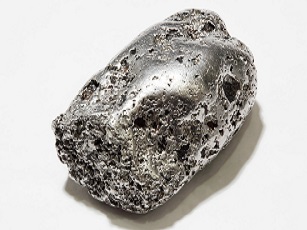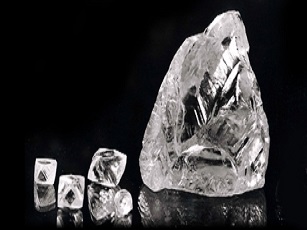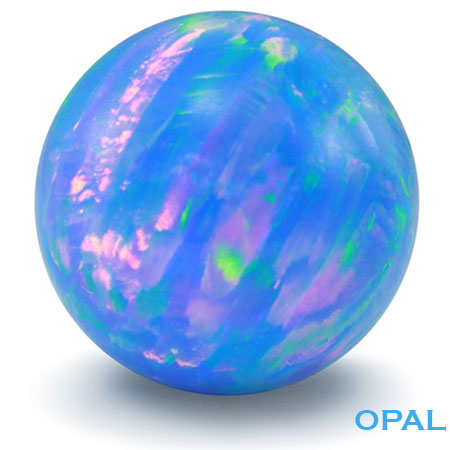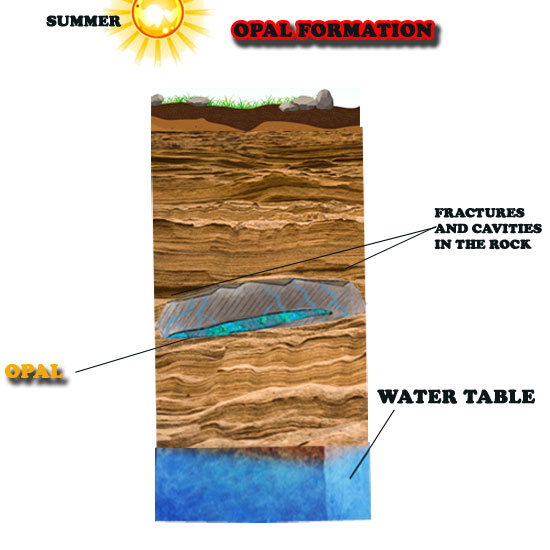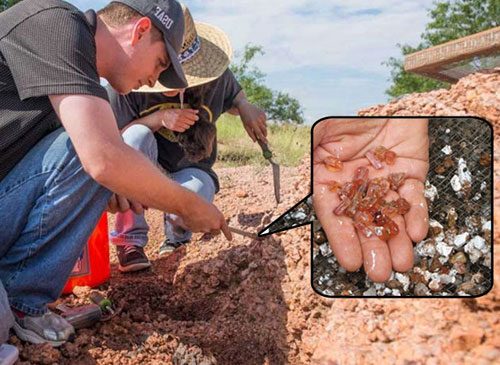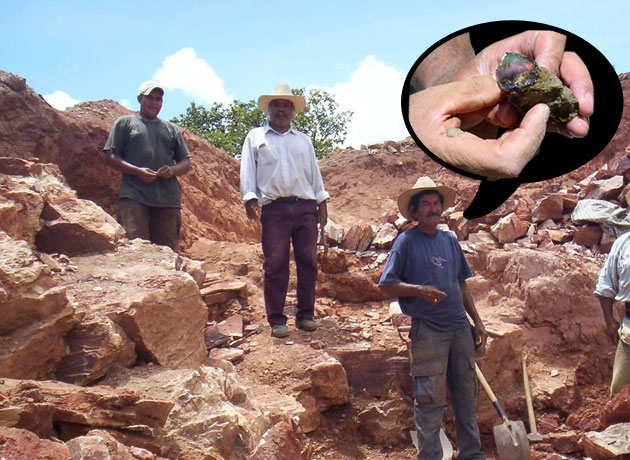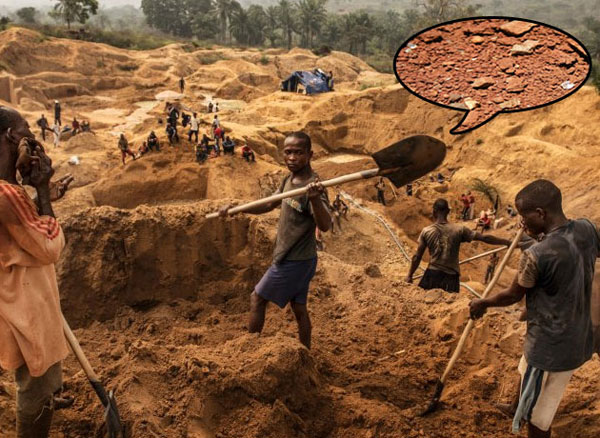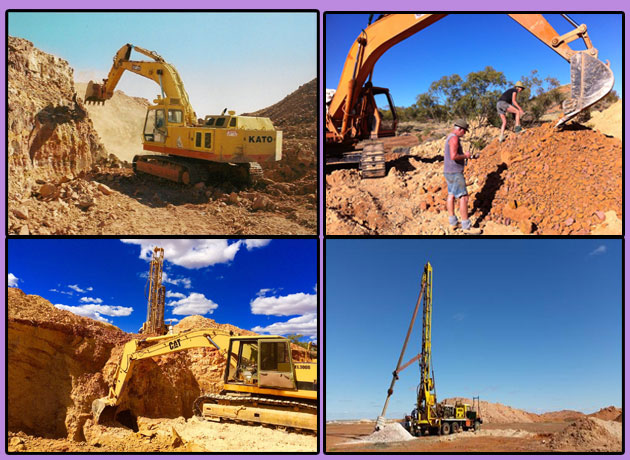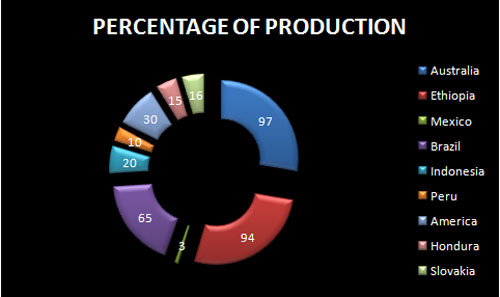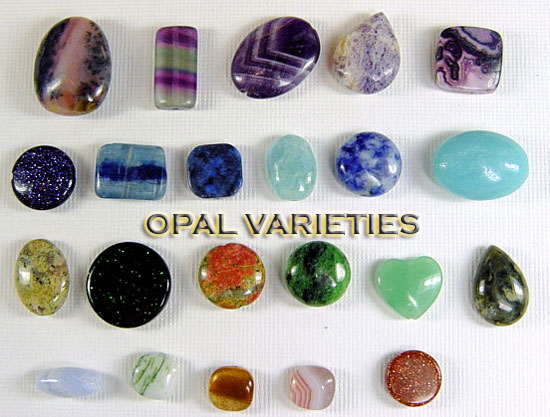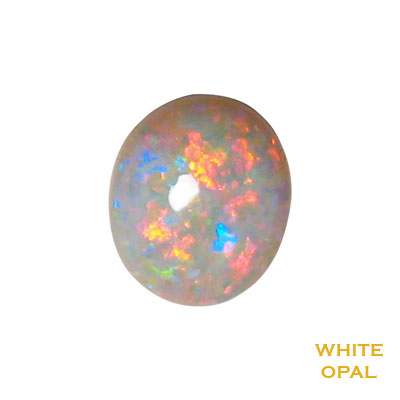OPAL MINING
OPAL MINING:
Opal mining is the process of extracting opals from the Earth. Opals are unique gemstones known for their stunning play of color, where iridescent flashes appear as the gemstone is viewed from different angles.
OPAL FORMATION AND APPEARANCE:
The formation of opal involves a process in which silicon dioxide and water combine. As water moves through the Earth, it collects silica from sandstone and carries this silica-rich solution into cracks and gaps caused by natural faults or the decomposition of fossils. When the water evaporates, it deposits silica, and this process occurs over long periods, leading to the eventual formation of opal. Opals typically develop within elongated or ellipsoidal ironstone concretions or rocks, ranging in size from a few centimeters to up to 3 meters in diameter. These rocks may occur in one or more layers within weathered sandstone, with compositions ranging from different types of sandstone to ironstone.
Opal appears as a filling or lining between concentric layers within the ironstone. Matrix opal, on the other hand, forms a network of veins or fills voids between grains of the host rock. Seam or band opal, a rarer type, is often covered in ironstone. Pipe opal takes the shape of pipe-like structures, sometimes hollow, within the sandstone, reaching diameters of several centimeters. In contrast to other sedimentary precious opals, boulder opal is attached to the ironstone, and stones are typically cut with the natural ironstone backing intact. Solid opals can be cut from the ironstone material if the opal is thick enough. Boulder opals are shaped into standard forms and sizes but are also fashioned into freeform shapes to showcase their unique beauty and minimize waste.
PROCESS OF OPAL MINING:
Opal mining involves a series of steps to extract opals from the Earth. The process can vary depending on factors such as the location of the opal deposit, geological conditions, and the scale of mining operations. Here's a general overview of the opal mining process:
- Prospecting and Exploration:
- Claiming a Mining Site:
- Trenching or Open Cut:
- Tunneling (Underground Mining):
- Bulldozing and Blower Trucks:
- Crushing and Sorting:
Geologists and prospectors identify potential areas with opal deposits through geological surveys, mapping, and exploration. Prospecting may involve soil sampling and other techniques to locate zones rich in opals.
Miners secure the rights to mine in a specific area by obtaining a mining lease or claim.
Miners begin by digging trenches or open cuts to expose layers containing opals. This method is suitable for shallow deposits and involves removing overburden (soil and rocks) to access the opalized layers.
In areas with deeper opal deposits, miners use tunneling methods to access the opal-bearing layers. This can involve digging shafts or tunnels to reach the desired opalized level.
Explosives may be used to break apart rocks and extract the opal-bearing material. The extracted material is then transported to the processing plant for further treatment.
The extracted rocks are crushed into smaller pieces to facilitate the separation of opals from other minerals. Various screening and sorting processes are employed to separate opal crystals from the crushed material.
- Washing and Cleaning:
- Gemstone Recovery:
- Cutting and Shaping:
- Quality Assessment:
- Optional Treatment:
- Distribution and Marketing:
The topaz-bearing material is washed to remove impurities, and further cleaning processes may be employed to enhance the quality of the extracted topaz.
Gem-quality topaz crystals are recovered from the processed material. The recovered topaz crystals may be in the form of rough, uncut gemstones.
Gem cutters, or lapidaries, shape and facet the rough topaz gemstones to enhance their beauty and brilliance. The cutting process involves precision techniques to create finished gemstones.
The finished gemstones are assessed for quality based on factors such as color, clarity, cut, and carat weight.
Some topaz gemstones may undergo treatments to enhance or alter their color. Common treatments include irradiation and heat treatment.
The finished and processed topaz gemstones are distributed to wholesalers, retailers, and jewelry manufacturers.They are then made available to consumers through various channels.
STANDARD METHODS USED IN OPAL MINING:
The standard methods of mining for opal include a range of techniques and processes, each suited to different geological conditions and the depth at which diamonds are found. Here are the standard methods commonly used in diamond mining:
Trench Searching
-
Opal Divining
Open Cut (Open-Pit Mining)
-
Modern Opal Mining
Trench Searching
Trench searching involves digging shallow trenches or pits to expose opal-bearing layers. Miners inspect the walls and floor of the trench for signs of opals, such as color flashes or the presence of opalized material.
Opal Divining
Opal divining, also known as dowsing or using a divining rod, is a traditional method where a diviner uses a tool (commonly a Y-shaped rod or a pair of L-shaped metal rods) to locate underground water or minerals, including opals. While not scientifically proven, some miners believe that divining can help identify areas with potential opal deposits.
Open Cut (Open-Pit Mining)
Open-cut mining involves excavating large open pits to reach opal-bearing layers. Heavy machinery, such as bulldozers and excavators, is used to remove overburden (soil and rocks) and expose the opalized layers. This method is effective for shallow opal deposits.
Modern Opal Mining
Modern opal mining encompasses various mechanized methods and technologies. Bulldozers, excavators, and trucks are used to remove overburden and extract opal-bearing material. Advanced equipment, such as tunneling machines and blower trucks, may be employed for more efficient mining operations.
WORLDWIDE TRENDZ FOR OPALS:
Opals, as unique gemstones, are beloved by various nationalities, with specific opal patterns developing in many countries. While opal prices have decreased by around 20%, countries such as France, Belgium, and Australia have experienced an increase in demand or value.
| Countries | Percentage of Production |
| Australia | 97 |
| Ethiopia | 94 |
| Mexico | 3 |
| Brazil | 65 |
| Indonesia | 20 |
| Peru | 10 |
| America | 30 |
| Hondura | 15 |
| Slovakia | 16 |
OPAL VARIETIES:
Opal comes in a fascinating array of colors and types, with some popular varieties including black opal, white opal, boulder opal, crystal opal, fire opal, and opal matrix.
Black Opal:
Renowned as the most prized opal variety, black opal boasts a rich, dark body color and an intense play of vivid colors, making it a rare and highly coveted gemstone.
White Opal:
Characterized by its light and milky body color, white opal offers a beautiful play of colors, presenting an appealing alternative to the more valuable black opal.
Boulder Opal
Uniquely found in substantial boulders in Australia, boulder opal typically features a dark body color, complemented by a striking display of vibrant colors.
Crystal Opal:
Distinguished by its transparency and brilliant play of colors, crystal opal stands out as a more valuable opal variety, appreciated for its captivating visual effects.
Fire Opal:
Displaying warm hues of orange, yellow, or red in its body color, fire opal is transparent and showcases a lively play of colors, adding vibrancy to opal varieties.
Opal Matrix:
Embedded within a host rock, opal matrix exhibits a milky body color with a captivating play of colors, creating a distinctive appearance within its geological matrix.
USES OF OPAL MINING:
Opal mining serves as the primary method for extracting opals, and the gemstone has various uses once it is mined and processed. Here are some key uses of opal mining:
Gemstone Industry: The primary and most well-known use of opal mining is for obtaining opals as gemstones. Opals are highly valued for their unique play of color and are used in the production of exquisite jewelry, including rings, earrings, necklaces, and bracelets.
Jewelry Manufacturing: Gem-quality opals extracted through mining are cut, shaped, and polished by skilled lapidaries. These finished opals are then used by jewelry manufacturers to create stunning and unique pieces of jewelry.
Collector's Market: Opals, especially those of exceptional quality or unique characteristics, are sought after by gemstone collectors. Collectors may acquire opals for personal enjoyment, investment, or as part of a broader gemstone collection.
Cultural and Artistic Uses: Opals have cultural significance in various societies and may be used in traditional or ceremonial jewelry. Additionally, opals are sometimes incorporated into artistic creations, sculptures, and decorative items.
Birthstone Jewelry: Opal is the birthstone for the month of October. As such, opals are often used in birthstone jewelry, including personalized pieces for individuals born in October.
Scientific and Educational Purposes: Some opals, particularly those with unique characteristics or inclusions, may be of interest to scientists and researchers studying gemology, mineralogy, or geology. These specimens can be used for educational purposes and research.
Opal Mining Tourism: Opal mining areas, especially in regions like Australia, attract tourists interested in experiencing the mining process, learning about opals, and purchasing opal jewelry. Opal mining tours and experiences contribute to local economies.
Opal Trade and Commerce: Opals are traded internationally, contributing to the global gemstone market. The opal trade involves miners, wholesalers, retailers, and manufacturers, fostering economic activity in regions with significant opal deposits.

